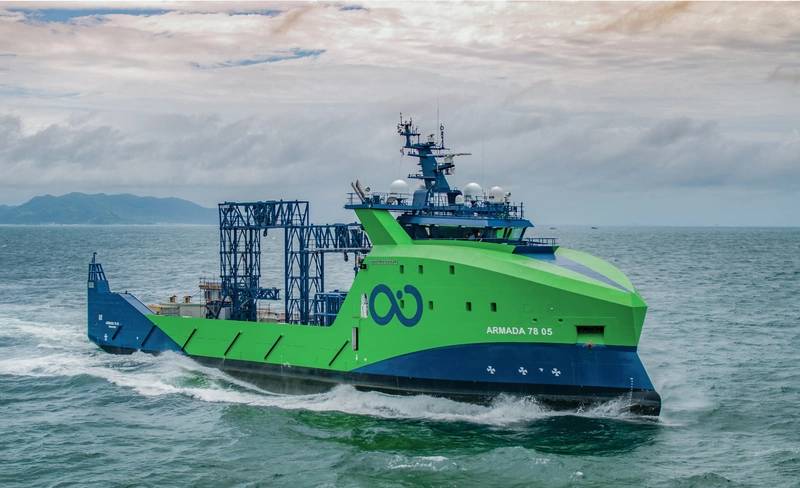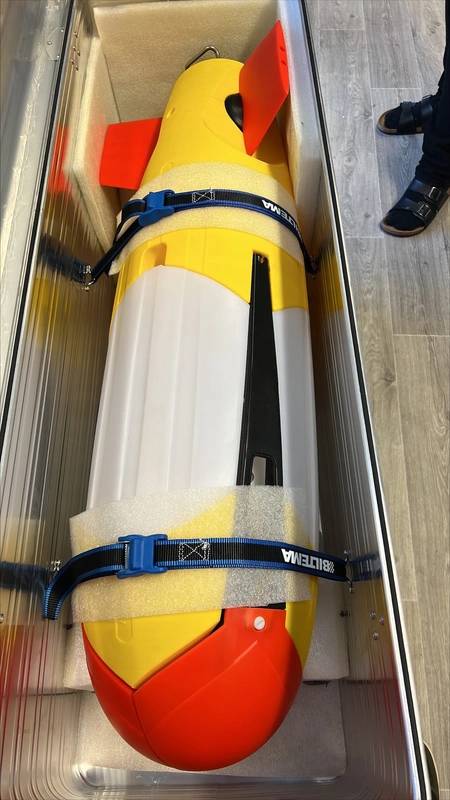
There is a flurry of development underway to cut seafloor seismic and geotechnical survey technologies free from on-site control.
The deeper you go, the quieter the ocean becomes. It’s something that Kyrre Tjøm is exploiting in his back-to-basics approach to ocean bottom nodes (OBNs). Like his competitors, the CEO and Founder of iDROP, is developing autonomous OBNs that can deploy themselves on to the seabed without ROV support.
The current method for laying the nodes, which catch reflected waves during seismic surveys, involves specialist vessels and specialist crews. It only takes one member of the team to fall sick to disrupt an entire survey schedule, says Tjøm. That’s how in-demand the expertise is.
He has caught the attention of Woodside, ExxonMobil and others. Unlike his competitors, Tjøm is avoiding high-tech complexity above and below the surface. One way he is doing this is to exploit the quiet ocean floor to enable his Oceanid OBNs to communicate with others in the swarm and with the ship, using acoustics. This is facilitated by having upright OBNs that aren’t obstructed by seafloor topology.
OBN-to-OBN communication is used for navigation and, as a swarm, to produce relatively small but high resolution seismic datasets. In the future, it will enable the swarm to report back to the launching vessel even if the vessel has moved beyond the reach of an individual OBN.
 Ocean Infinity’s Armada surface robot vessels only require a skeleton crew because data processing and payload control is conducted from onshore operations centers.
Ocean Infinity’s Armada surface robot vessels only require a skeleton crew because data processing and payload control is conducted from onshore operations centers.
Source: Ocean Infinity
The OBNs are designed to glide to the seafloor without the need for ROV help or DP-positioning mother vessels. As part of their patented autonomy, the OBN’s will use flight data to create a current profile as they traverse the water column at a predefined heading, constantly adjusting angle of attack to create the required lift to navigate autonomously into position while the deployment vessel has moved on.
Where other autonomous OBNs use 50% of their battery power for launch and retrieval operations, iDROP’s gravity-based OBNs use around 5%. They use their rudders and landing gear to slow their descent prior to landing and correct their vertical inclination before mechanically deploying their payload of sensors into the seafloor. As there’s no need for ROVs or umbilicals, if one OBN fails its target spec, it is easy to deploy another.
Each OBN is about a meter long and weighs around 25 kilograms. The whole swarm system is containerized, up to 250 OBNs per container, and suitable for deployment by the deck crew of an OSV without ROV support. “We can scale it down to one OBN or up to 7,000. It doesn’t really matter. It’s just a number of containers,” says Tjøm. “Deployment is 50% faster than with ROVs, and recovery is 50% faster.” Along with greater simplicity comes a 95% drop in GHG emissions, he says.
iDROP and some of its competitors expect to move beyond pilot testing this year. His competitors have similar goals, claiming reduced emissions and dramatic reduction in deployment logistics. Last year, Blue Ocean Seismic Services claimed its autonomous OBNs outperformed ROV-positioned OBNs. PXGEO uses hovering autonomous underwater vehicles rather than ROVs, claiming they are capable of deploying and recovering OBNs significantly faster and with better precision than traditional methods. "Geotechnical drilling and sampling will evolve towards fully autonomous operations on the seafloor."
"Geotechnical drilling and sampling will evolve towards fully autonomous operations on the seafloor."
Andrew Galbraith, Managing Director of Ocean Infinity
Source: Ocean InfinityOcean Infinity is not removing ROVs from its autonomous processes, but it is removing on-site human supervision. This year, the company signed an agreement with Shell for the provision of lean-crewed and robotic geophysical and geotechnical services. This includes using Ocean Infinity’s Armada surface robot vessels of various sizes which only require a skeleton crew because data processing and payload control is conducted from onshore operations centers.
Andrew Galbraith, Managing Director of Ocean Infinity, says that while ROV-based survey operations are integral to the Armada solution, the difference lies in their integration within a comprehensive system. “ROVs are launched, recovered, and operated from a mother Armada vessel, alongside various other payloads like Ocean Drill, SonicCorer, Infinity CPT and AUVs. This consolidated approach optimizes efficiency and coordination in offshore operations.”
Ocean Infinity has already entered the offshore wind geotechnical market with its newly developed autonomous cone penetration test (CPT) device, Infinity CPT 250. Last year, for the Ossian wind farm, deep push seabed CPTs, seabed seismic CPTs and vibrocore operations were carried out remotely using over-the-horizon commands sent via a remote-control system.
Recent advancements in AI and in low orbit, low latency satellite communications which have greatly enhanced remote control solutions and real-time data transfer have made it possible to do this. Infinity CPT and other payloads communicate directly with control systems on the mother vessel via a lift umbilical. The vessel's control systems communicate via satellite to the remote control center and the cloud. Infinity CPT can receive mission statements and execute them with minimal supervision. The data is automatically processed and reported to clients.
Galbraith sees a future where geotechnical drilling and sampling will evolve towards fully autonomous operations on the seafloor. This includes autonomous Ocean Drills capable of investigating the sub-seabed independently, retrieving and storing soil samples with minimal human intervention. Intelligent control system software will facilitate this autonomous functionality, requiring only a mission statement for the robot to complete tasks optimally.
Robots such as Ocean Infinity’s Ocean Drill or SoniCorer rely on an array of sensors that are used by algorithms to allow the robot to interface with the environment that it encounters during the completion of a given task. The data from the sensors will also be used to supervise or monitor the status of the robot and to allow the human monitor to intervene if needed from a remote location.
As more offshore operations are completed and Ocean Infinity’s systems are proven to be effective and reliable, they will require less supervision.
For example, part of the control system for Ocean Drill includes a product called Smart Drill which will eventually replace the need for a human driller who makes operational decisions. Smart Drill relies on a training data set relevant to a target borehole to plan and drill it in an efficient way with minimal supervision.
Ultimately, the Amada vessels themselves will operate without any onboard crew. They will use zero emission fuel and perform offshore data acquisition and intervention operations down to depths of 6,000 meters. iDROP’s Oceanid OBNs to communicate with others in the swarm and with the ship, using acoustics.
iDROP’s Oceanid OBNs to communicate with others in the swarm and with the ship, using acoustics.
Source: iDROP